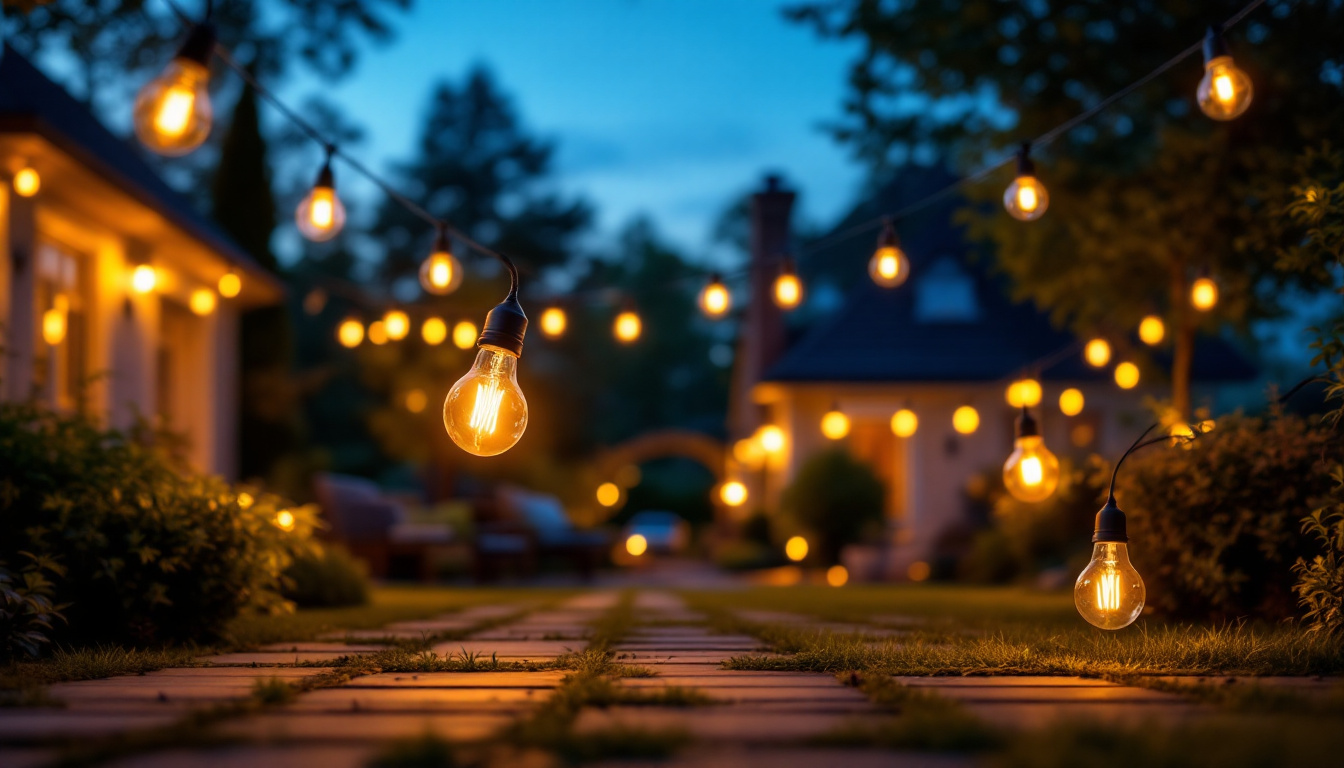
Outdoor lantern posts serve as both functional lighting solutions and decorative elements in residential and commercial landscapes. For lighting contractors, understanding the various types, installation techniques, and maintenance requirements of these fixtures is essential. This guide aims to provide comprehensive insights into outdoor lantern posts, ensuring that contractors can deliver exceptional results to their clients.
Outdoor lantern posts are designed to illuminate outdoor spaces while adding aesthetic appeal. They come in various styles, materials, and sizes, making them suitable for different applications, from garden pathways to parking lots. These lighting fixtures not only enhance visibility but also contribute to the overall ambiance of an outdoor area, creating a welcoming atmosphere for gatherings or simply for enjoying a quiet evening outdoors.
There are several types of outdoor lantern posts, each with unique characteristics and benefits. The most common types include:
The choice of material significantly impacts the durability and aesthetic of outdoor lantern posts. Common materials include:
Proper installation is crucial for the longevity and effectiveness of outdoor lantern posts. Lighting contractors must consider several factors to ensure a successful installation.
Before installation, a thorough site assessment is essential. This involves evaluating the landscape, existing structures, and the intended purpose of the lighting. Key considerations include:
Additionally, it is important to consider the surrounding environment, including natural elements like trees or shrubs that may cast shadows or obstruct light. The orientation of the lantern posts in relation to the sun can also impact solar-powered options, as adequate sunlight exposure is vital for optimal performance. Furthermore, understanding the local climate and weather patterns can help in selecting materials that withstand environmental stressors, ensuring durability and reducing maintenance needs over time.
The installation process can vary based on the type of lantern post and the chosen power source. Here are general steps to follow:
After the lantern is installed, it is advisable to conduct a test run to ensure that the lighting functions as expected. This includes checking for any flickering lights, ensuring that the illumination is evenly distributed, and confirming that the power source is functioning correctly. Additionally, consider implementing a routine maintenance schedule to clean the lanterns, check for any wear and tear, and replace bulbs as necessary. This proactive approach not only enhances the aesthetic appeal of the outdoor space but also prolongs the life of the lighting fixtures, ensuring they remain a reliable source of illumination for years to come.
Effective lighting design enhances the functionality and beauty of outdoor spaces. Lighting contractors should adhere to several principles when planning the layout of outdoor lantern posts.
Layering light involves using different types of lighting to create a balanced and inviting atmosphere. In outdoor settings, consider combining:
The spacing and placement of lantern posts can significantly affect the overall lighting effect. Key guidelines include:
As energy efficiency becomes increasingly important, lighting contractors must consider sustainable options for outdoor lantern posts. This not only benefits the environment but can also reduce long-term costs for clients.
LED lights are a popular choice for outdoor lantern posts due to their energy efficiency and longevity. Compared to traditional incandescent bulbs, LEDs consume significantly less energy and have a lifespan that can exceed 25,000 hours. This translates to reduced maintenance and replacement costs, making them an attractive option for both contractors and clients.
Solar-powered lantern posts offer a sustainable lighting solution that requires no electrical installation. They harness solar energy during the day and illuminate at night, making them ideal for remote locations or areas where running electrical lines is impractical. However, it is essential to consider:
Regular maintenance is vital to ensure the longevity and functionality of outdoor lantern posts. Contractors should educate clients on proper care and maintenance practices.
Cleaning outdoor lantern posts regularly helps maintain their appearance and functionality. Contractors should recommend the following steps:
Seasonal changes can affect outdoor lantern posts, particularly in regions with harsh winters or heavy rainfall. Contractors should advise clients to:
Lighting contractors may encounter various challenges when working with outdoor lantern posts. Understanding these challenges and their solutions can enhance project outcomes.
Electrical problems can arise during installation or after the lanterns are in use. Common issues include:
Outdoor lantern posts are exposed to various environmental elements that can affect their performance. To mitigate these issues:
Outdoor lantern posts are essential components of landscape lighting, providing safety, functionality, and aesthetic appeal. For lighting contractors, understanding the various types, installation techniques, and maintenance requirements is crucial for delivering high-quality results. By adhering to best practices in design, installation, and maintenance, contractors can ensure that their clients enjoy beautifully illuminated outdoor spaces for years to come.
As the demand for sustainable and energy-efficient lighting solutions continues to grow, contractors who stay informed about the latest technologies and trends will be well-positioned to meet client needs. Whether it’s selecting the right materials, ensuring proper installation, or providing ongoing maintenance, a thorough understanding of outdoor lantern posts will enhance the contractor’s ability to provide exceptional service.
Ready to elevate your lighting projects with superior quality and unbeatable value? Look no further than LumenWholesale for all your outdoor lantern post needs. Our spec-grade lighting products are designed to meet the highest industry standards, ensuring your installations shine with reliability and performance. Say goodbye to inflated markups and hello to hassle-free bulk buying with free shipping. Don’t compromise on quality or price. Visit LumenWholesale today and discover the perfect blend of quality, affordability, and convenience for Wholesale Lighting at the Best Value.

Discover expert insights and practical tips from lighting contractors on creating an energy-efficient and aesthetically pleasing home environment.

Discover how innovative bakery fixtures can provide lighting contractors with a competitive edge.

Explore the essentials of dusk to dawn outdoor light bulbs in this comprehensive guide tailored for lighting contractors.

Discover how electrical sockets enhance efficiency for lighting contractors by streamlining installations and reducing project time.